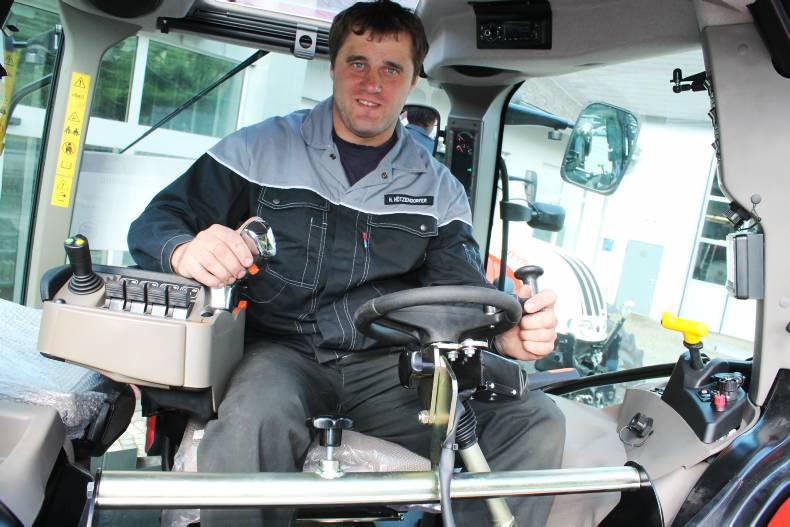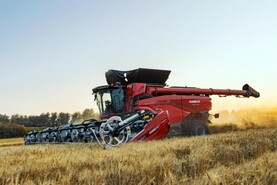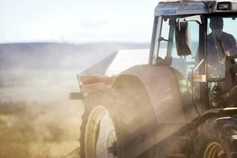On a recent visit to CaseIH’s European headquarters at the Steyr facility in Austria, the Irish Farmers Journal visited an Austrian firm responsible for special tractor conversions, with the help of CaseIH’s special project manager Wolfgang Müller-Steyr.
The firm, Kneidinger 1880, is a family-owned business which was established, as its name suggests, in 1880 by Martin Kneidinger.
There are two sides to the Kneidinger family business, an auto division and an agri-division. There are about 80 staff in total; 50 working in the agri side and 30 in the auto side.
Markus Kneidinger runs the agri side of the business. This is located on the bend of a twisty, mountainous valley road and is the site of the original Kneidinger blacksmith business.
Kneidinger 1880 looks like any agri-dealership, albeit in a pretty picturesque location. Typical brands within the dealership include Steyr, CaseIH, Pöttinger, DeLaval, Stihl and much more.
Kneidinger 1880 has been a Steyr dealer since 1947 and currently sells in the region of 80 Steyr tractors per year. It has always had a close working relationship with the Steyr factory.
Kneidinger, in co-operation with and on behalf of CaseIH at St Valentin, provides specialist conversions of Steyr, CaseIH and New Holland tractors for CNH-group dealers.
These conversions include the fitting of forestry protection frames, tractor-mounted cranes for handling or harvesting timber, bullet-proof glass for timber-harvesting applications, cab suspension systems, spring-loaded brakes (for certain smaller models) and much more.
Perhaps the biggest and most notable conversion work that Kneidinger does is both reverse drive conversions and reverse orientation conversions on CNH family products.
The latter is where just the seat and arm rest controller rotate, but there is no reverse drive capabilities. This provides visibility for stationary operations such as timber-loading with a tractor-mounted crane.
Operations
Hermann Höfler runs operations at Kneidinger 1880 and explains that the orders for reverse drive tractors were too small for the plant at St Valentin to cater for.
With that, Kneidinger has been doing reverse drive conversions for CaseIH, Steyr and to a lesser degree New Holland since 1997. Kneidinger’s location would have helped too. It is situated about an hour northwest of the CaseIH headquarters.
Initially, the reverse drive option would have been ordered through the CaseIH or Steyr dealers’ ordering system and the factory paid for this extra option. Today, Kneidinger is paid directly by the dealer.
The conventional CaseIH/Steyr tractor leaves St Valentin and is shipped to Kneidinger for conversion. Once complete, it is shipped back to St Valentin for delivery as per normal to whichever European dealer ordered it, including Irish dealers.
Springmount Tractors Ltd in Wexford supplied Kehoe Farming in the south of Wexford with a Kneidinger reverse drive converted CaseIH CVX195 several years ago.
Kehoe’s have two sets of Claas triple mowers which they run on reverse drive tractors. The other reverse drive tractor is a Valmet. A reverse drive Puma 225CVX converted by Kneidinger also made its way to Ireland for demo, but ultimately wasn’t sold and it returned to the UK.
In total, the team at Kneidinger would convert between 50 and 70 tractors a year to reverse drive according to Hermann. The majority of these would be CaseIH- and Steyr-branded products.
The most popular tractors for conversion are LWB Puma/Steyr CVX/CVT tractors according to Hermann.
“We do get some blue ones too,” shrugs Hermann, referring to New Holland-branded products. But location has to be a problem with most of New Holland’s production based in the UK.
In total, Kneidinger has done about 700 reverse drive conversions to date, most of these for the Austrian and German markets where they are used for not just agricultural purposes, but forestry with mulchers and cranes, plus municipal applications such as snow-blowing during the winter months.
Kneidinger only converts tractors from CNH, starting with CaseIH Maxxum (and Steyr/NH variants) and upwards. The firm used to convert tractors as small as CaseIH’s JXU, but the cab on its replacement, the Farmall, is too small for conversion.
A growing number of CaseIH Magnums are being presented for conversion.
“We see growth for the Magnum in municipal and forestry because of its CVX ability,” said Hermann. Its large size, high hydraulic output and CVX ability is apparently ideal for fitting a crane to with a timber- harvesting head.
Conversion
Up to eight staff are available to do conversions if necessary and a “maximum 80 conversions [per year] is possible,” Hermann states. The entire conversion process takes about 10 days – “50% to make and 50% to fit,” says Hermann
Kneidinger 1880 is a dealership in every sense, but also has its own in-house machine shop and design facilities.
Staff are well trained and clearly very capable. Engineers and technicians at Kneidinger work very closely with engineers in St Valentin to develop, design and build various solutions to broaden the scope of the humble tractor.
In the design office at Kneidinger is Martin Traxler, who uses drawings from St Valentin to aid in the design and construction of Kneidinger products. This close co-operation is beneficial for both companies and simplifies the design process a little.
The entire conversion kit is built in-house, with the exception of the laser-cut pieces to make the kit. These are prepared by another firm just 2km away. The kit includes a turntable for the seat, rear steering assembly and rear pedal assembly.
Helmut Hötzendorfer heads up the conversion team and essentially guts much of the cab to prepare for the conversion. The heater unit on CaseIH Maxxum and Puma (and equivalent Steyr/NH) models is directly behind the seat. This has to be moved into the side of the rear left-hand panel to start to make room for the feet of the operator in reverse-drive mode.
This rear section has to be extended rearward by 100mm to accommodate the brake and clutch pedals, plus the operator’s feet. The rear accelerator pedal is mounted on the right in a back-to-front configuration.
A second hydraulic orbital control unit and steering assembly is then installed to allow for steering in reverse-drive mode. A lemon profile PTO tube provides a sliding rail for the miniature rear steering wheel. The front orbital steering unit is also changed to accommodate the new steering system.
Only a single brake pedal is used in reverse-drive mode, so no side brake operation. This pedal is operated by a slave cylinder under the front dash, which presses the front-facing brake pedals.
The clutch pedal and accelerator pedal are both drive-by-wire controls so are integrated into the tractor’s electrical circuit.
Kneidinger manufactures its own swivel plate for the seat and an extra bracket to prop the multicontroller armrest in a higher position for rotating the seat and armrest into reverse drive position.
The multicontroller armrest has its wiring loom extended to facilitate the conversion to reverse drive. A switch in the swivel plate changes over a relay unit to reverse the orientation of the multicontroller lever. In short, on CVX versions, this ensures that the tractor goes forwards when the multicontroller lever is pushed forwards.
Other controls include a forward-reverse shuttle lever under the steering wheel. In reverse drive mode, the operator no longer faces the front pillar display so Kneidinger fit a new one to the operator’s left in reverse-drive mode.
Converted tractors are only intended for use in reverse-drive configuration in-field or on-site. To meet lighting regulations, all are driven on the road in standard forward-facing mode.
The 2014 price of a full reverse-drive conversion of a CaseIH Puma CVX LWB 165-230 is in the region of €12,150 plus VAT. Not overly expensive, but you would certainly need considerable reverse work to justify the extra investment.






 This is a subscriber-only article
This is a subscriber-only article













SHARING OPTIONS: